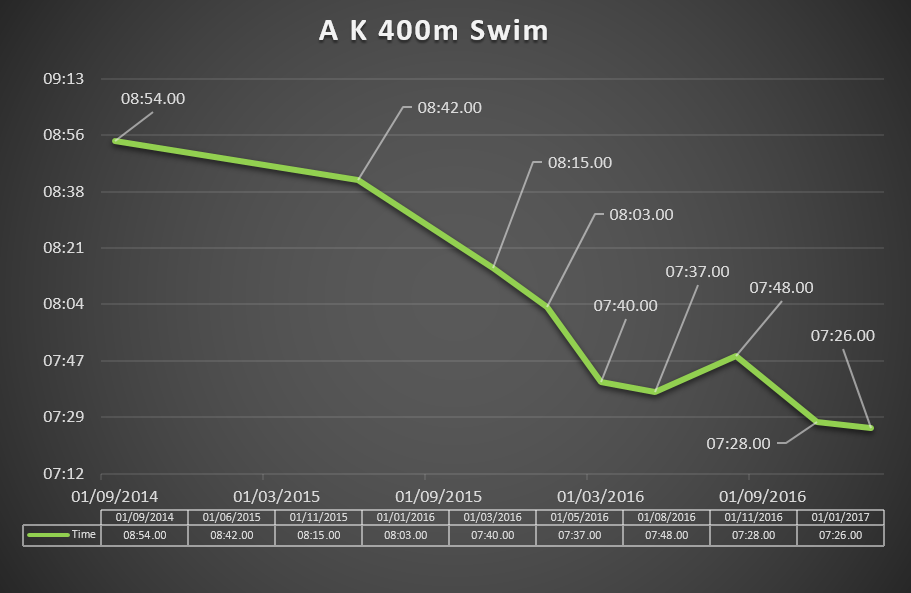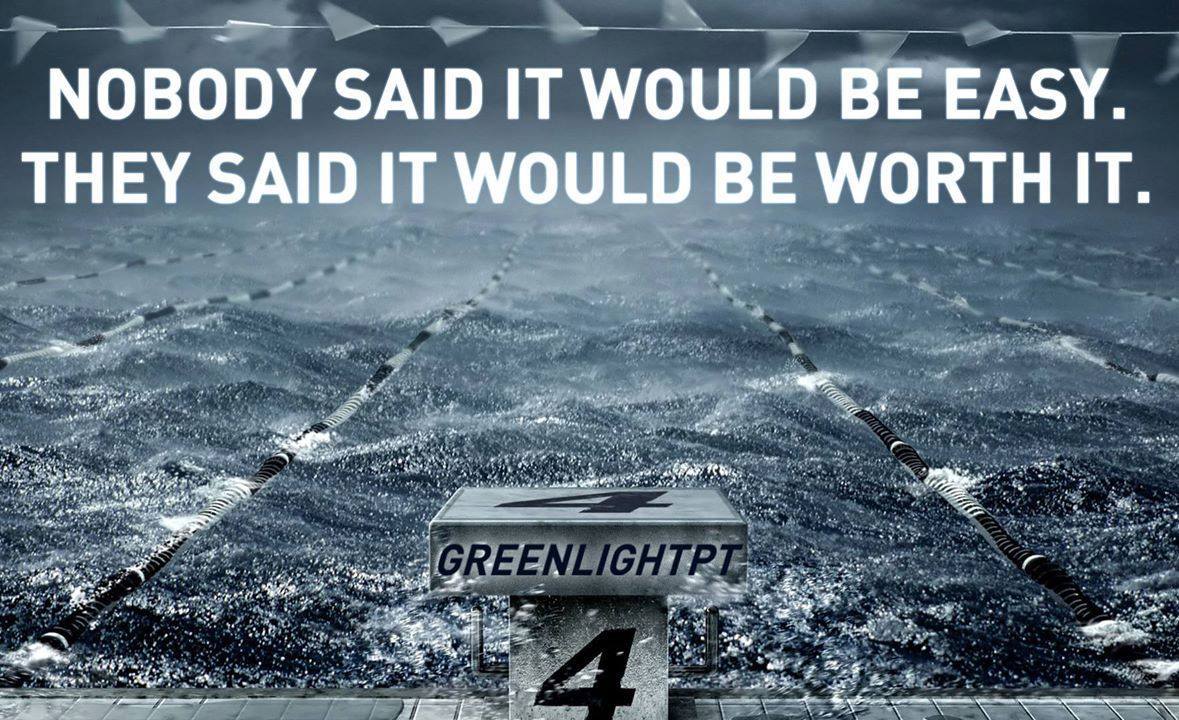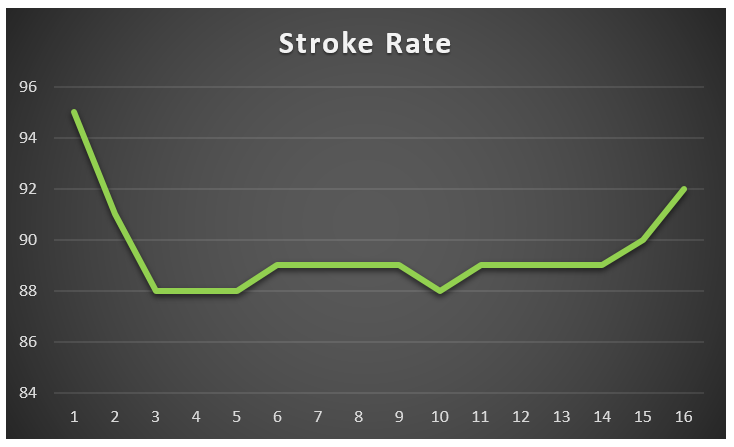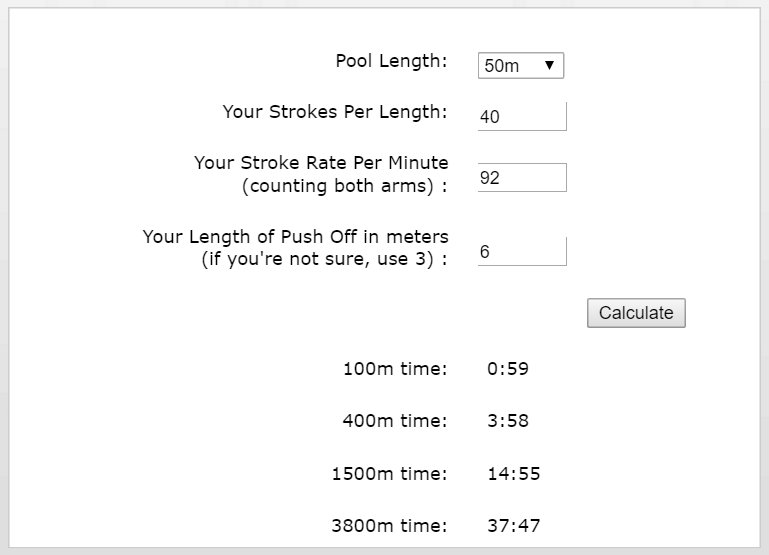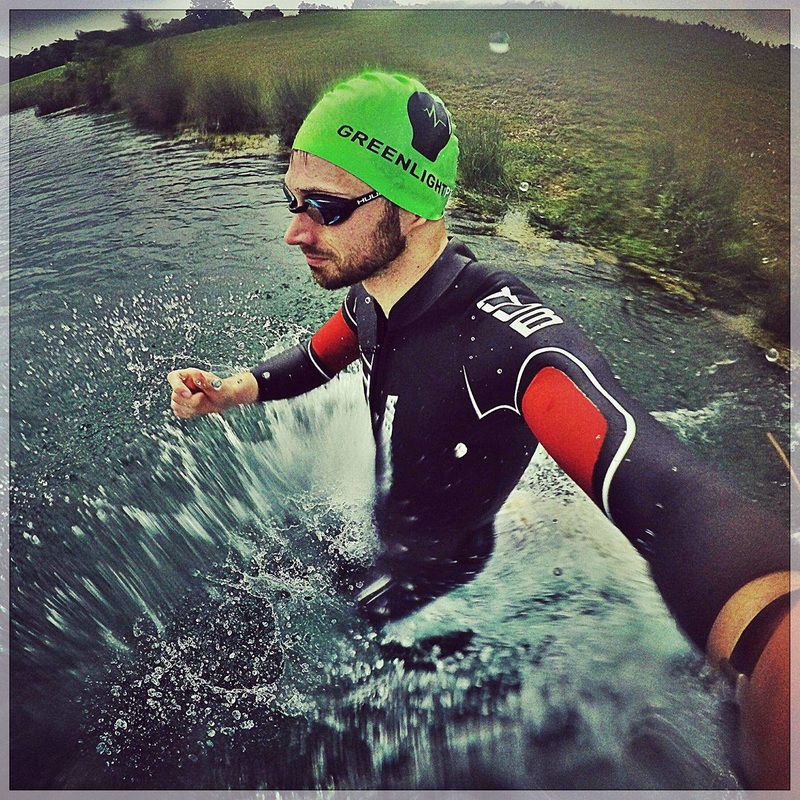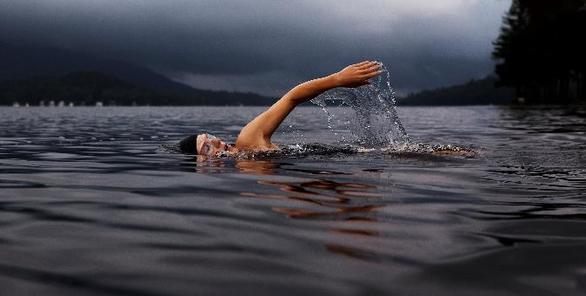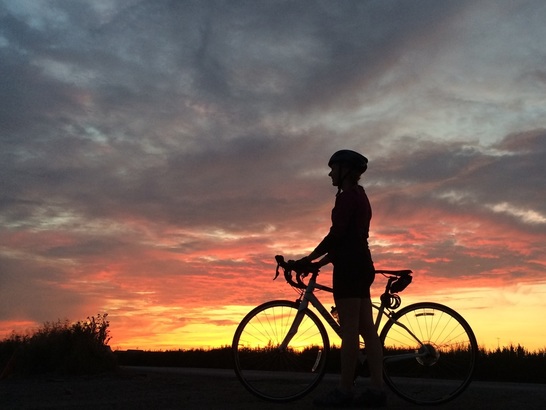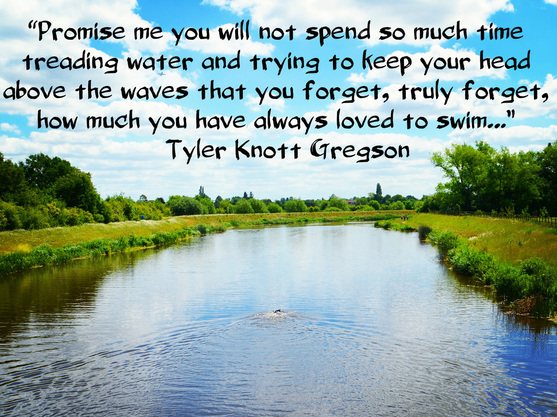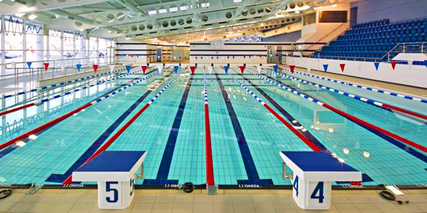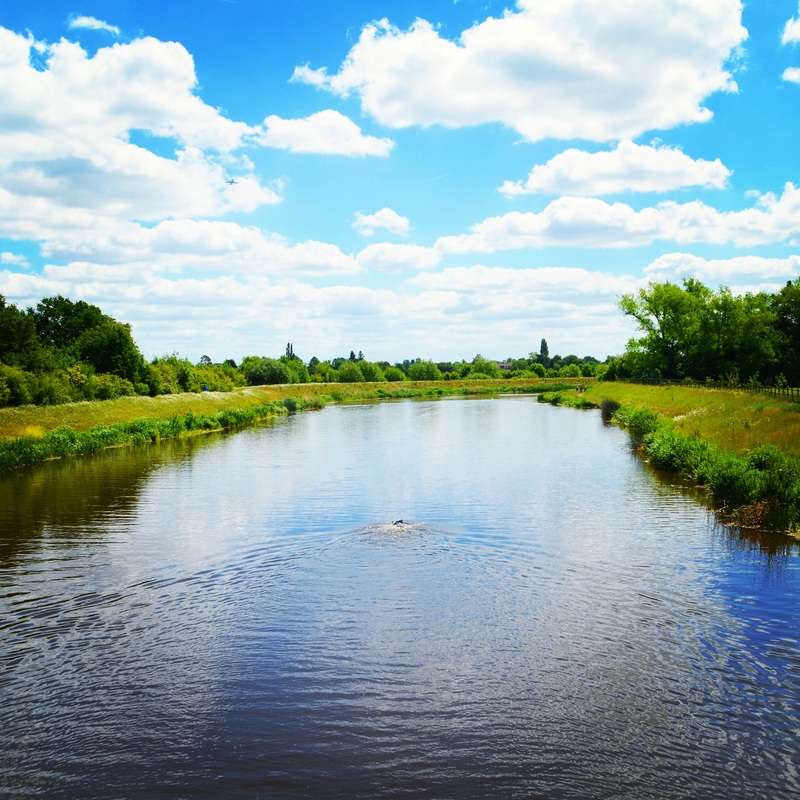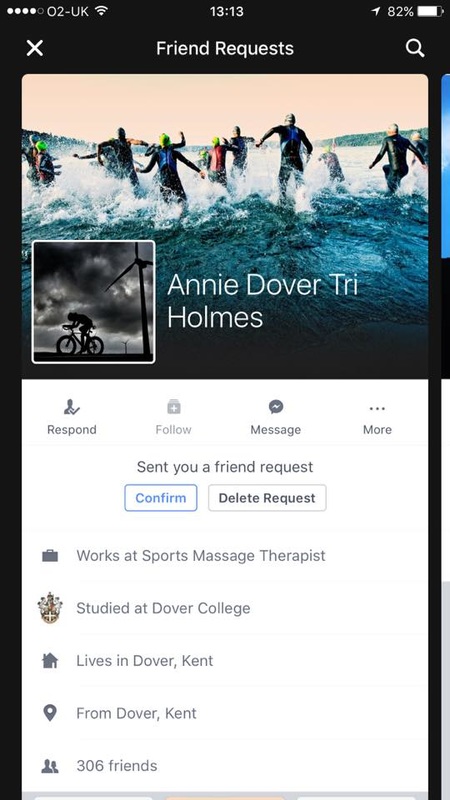|
New Chinese owners of the Ironman Corporation have voted to change the iconic M-Dot logo for a more tradition Chinese logo.
The move has left thousands of athletes with a meaningless red M on their calves. Barry Jones (1989th at Ironman Basildon) says "I've been advertising Ironman on my leg for 9 years now, this is completely unacceptable" David Peacock (Ironman Kona Finisher) says "I'm not too bothered...it was just my B race"
2 Comments
The dreaded CSS test.
Some people love them. Some people hate them. To some people its just another session. For those of you who don't know what a CSS test is, its basically a 400m and 200m swim time trial, used to benchmark your swimming and set some training targets. Read more here at Swim Smooth if you like:http://www.swimsmooth.com/css-calculator.html We test our squad every 12 weeks and keep a log of all our results here: http://www.greenlightpt.co.uk/css.html Now I like to think we have a pretty badass reputation of improving swimmers, and at our last squad test we had 79% improvement rate in CSS pace which is awesome.... BUT what if you are in the 21%? Firstly, understand that this is just a snap shot of your swimming on one specific day! If you went and knocked out a 5km run race every week your times could vary by 30-60 seconds depending on how you feel/perform on the day. This doesn't necessarily mean you've got slower, you were just tired or had an off day, or went off a bit too fast (more on that later!). Secondly, understand that the road to improvement is very rarely linear...! It'd be great if we just did some training and every time we did a test we got faster, but in reality there are plenty of ups and downs along the way. Here are some real life examples of swimmer's 400m times from our squad...
... note how overall all these swimmers have had some pretty epic improvements over time, BUT... all of them also had a 'blip' along the way!
So what should you do when you have a 'blip'...? First up... RELAX! Remember as mentioned above, its completely normal! Ever heard of the 3 'R's of swimming...?! Well one of them is relaxation. If you are tense, worked up, stressed or overthinking then you are not likely to swim to your best. Second up... figure out what went wrong! A few things it could be...
and finally... learn from what went wrong, re-focus, have faith and stick with it!
On the 12th of August 2016 at the Rio Olympics Katie Ledecky smashed her own World Record for 800m down to 8:04.79 from 8:06.68. Here is a little insight into how she did it...
Pacing
First lets look at Katie's pacing.
She is incredibly consistent which enables her to hold form and finish strong...
Which looks like this...
The most important thing to note on her pacing is how she is able to wind it up in the final 100m. She is swimming perfectly on the limit until this point and when she knows the finish is approaching she gives it everything. If she simply maintained pace she would have fell just short of the record.
Stroke Length vs Stroke Rate
Besides the first 50m Katie's Stroke Length stays at 40/41 strokes per 50m. There are 2 important things to note on her stroke length...
Once Katie's stroke rate settles down after the first 100m she settles down at 88/89 stroke per minute, this is higher than most other girls in the race! This again stays consistent (notice this word coming up a lot?!). When she picks up the pace in the final 100m she holds her stroke length and ramps up her tempo to 92 strokes per minute. If you own a Tempo Trainer try setting it to 92 SPM and see how you get on...!
This handy calculator from Swim Smooth HERE shows how this effects her speed in the final 100m...
Technique
We covered Katie's technique in detail HERE previously. One thing that looks even better than her 2015 WR is her strong high elbow pull. Check it out on both arms in the images below...
Mental State
Katie also has another thing on her side... less pressure than other swimmers! Katie could swim the 2nd place time any day of the week. She knows she is going to win while stood on the block. This means she can totally swim her own race and not have to worry about racing and responding to other swimmers efforts. This again conserves energy and enables her to have perfect pacing. Some might say that another super fast swimmer might push her on to even faster times... but would it spoil her perfect pacing?!
Is Sub 8 Possible...?
Here is a quick look at Katie Ledecky's WR progression. She seems to be showing no signs of slowing her progression and at only 19 years of age she certainly has time on her side! Sub 8 minutes is a very real possibility at Tokyo 2020 (or sooner) even if her progression slows slightly...
Summary
Ending up on the start line...I had kept my eye on Breca SwimRun since I read a blog about it last year, but hadn't really considered entering it.... until Natalie Lawrence messaged out of the blue asking if I wanted to race with her after her partner had dropped out. Sounded good to me, I agreed. Then in an unfortunate turn of events Natalie had to pull out also. So with just 5 weeks to go I somehow managed to convince Dave Glossy to do it with me (thanks Dave!!). Suddenly we were sat wondering how we had both ended up in a race neither of us had signed up for and we were slightly (err very!) unprepared for. Time for some panic training. SO what is Breca Swimrun?The blurb from Breca's wesbite explains their Buttermere race it far better than I can... ''Breca Buttermere is a swimrun race across some of the UK’s most stunning and rugged wilderness – the Western Fells of the Lake District. Over 17 consecutive legs, teams of two will complete a total of 6km of lake swimming and 38km of trail running, including 1,900m of vertical ascent and the infamous Honister Pass'' It looks like this... Run 0.6km Swim 600m Run 1.9km Swim 600m Run 5.7km (Up seriously big hill!) Swim 1000m Run 12.8km (Very hilly!) Swim 800m Run 2.1km Swim 400m Run 1.2km Swim 500m Run 2km Swim 1000m Run (lol) 10.1km (Up Dale Head / Honister Pass) Swim 600m Run 1.8km Add in the fact you have to stay together as a pair and are swimming in your trainers and running in your wetsuit... you have one seriously epic challenge! Panic TrainingWith about 4-5 weeks to train for the event we focused on 2 things. Slowly and safely building up some run volume and testing kit to find what worked best for us! Although the 'running' totals 38k on the event, the fact it was going to be broken up and involve some (lots of) walking made it difficult to figure exactly how far we needed to build up to in training. Dave's longest run was 30km and mine was 20km - and this seemed to do us just fine! We got down to Box End Lake and practiced plenty of running in our wetsuits and swimming in our trainers. We experimented with lots of different kit, the rules of swimrun are fairly relaxed. Hand paddles, pull buoys and fins are all allowed! People's swimming technique can be very individual and what works for one swimmer isn't always great for another. For example Dave is much quicker with a pull buoy and paddles, but both slow me down considerably! For the testing we simply swam a lap around Box End in various combinations of kit, and then tried to factor how much of a pain they would be putting on and off... and also carrying up a mountain! Turns our fins not the best option for this event, but pull buoy and paddles were for Dave! A few of the more random things we tried... Final KitOn top of the mandatory equipment (compass, whistle, map, bandage) we also carried plenty of gels, some painkillers, a camera, blister plasters and spare lube(38k in a wetsuit)! Here is what kit both ended up using...
Keep your eyes peeled on the GreenlightPT website for some articles coming soon about SwimRun training, kit and events...! Race DayAfter a 5 hour drive up late on Friday night we arrived in Buttermere early on Saturday morning ready to race! The race briefing was good with a clear run through the course, route markings and safety procedures. It was such a laid back friendly atmosphere before the race. Nobody was quite sure if they had the right kit, everyone nervous and apprehensive about what we were about to embark on. There was a real sense of adventure and camaraderie in the air. We had a pretty simple race plan that we hoped would serve us well...
Leg 1: Run (0.6km) 1 minute before the race my swim cap ripped in half! Not ideal. Replacement found within about 30 seconds and all of a sudden we were off! Clearly a bit too much excitement in the air as everyone seemed to set off at a pace that is usually only seen in the first 500m of your local parkrun. Me and Dave chilled near the back and let everyone do their own thing. We probably got to the water in about 30-40th position (95 teams in the race). Leg 2: Swim (600m) Only a short swim but long enough for us to start overtaking some of the weaker swimmers who had just set off like loonies. Water temperature was around 15 degrees, a bit chilly getting in but absolutely fine once you got going - crystal clear too! What a privilege to race in this area! Leg 3: Run (1.9km) Again lots of people came bombing passed us running at what looked like their 5/10k pace, we let them go, gave them a wave and hoped we'd see them again later on in the day. Leg 4: Swim (600m) We made a few places back on the swim and Dave took a turn on the front to share some of the work. You do have the option to bungee yourselves together in swimrun but I think you'd need to be seriously different abilities to require this! We just took turns at drafting each other. Leg 5: Run (5.7km) This started with a really long steep climb (about 300m accent - same as Slateman hill if anyone has done that). We walked up at what felt like a steady pace and let a few people power on passed us. Right on the top of the ridge there was a bit of confusion about the route (wouldn't be the last time!) and we seemed to have a lot of people following us - possibly the wrong way. After a few minutes and lots of shouting (mostly in Scandinavian!) the bunch of ten of us seemed to get back on the right track. Again lots of people flew passed us on this leg and a volunteer at the check point informed us we were probably about 20-25th. Leg 6: Swim (1000m) A chance to play to our strengths here with a big swim. We starting slowly moving through the field with me starting on the front then Dave taking a turn. About half way I spotted some swimmers over taking us off to the right (with us both coming from a swimming background this was quite a surprise!), so I forced Dave over towards them and jumped on their feet. They were seriously quick and helped us move up to about 13th/14th position. Leg 7: Run (12.9km) The longest run in terms of distance (the 10km up the mountain later on would take longer!) and we were overtaken by a bunch of 3 teams early on, we ended up running together with a few teams for most of this leg and had some good chat and laughs as we went along. Having our drinks bottles to hand really paid off on this section. We were busy fueling and hydrating while everyone else was waiting 90 minutes for the aid station. Interesting on this section to see who had taken their wetsuits down to the waist and removed swim caps - a lesson I learnt the hard way in Llanberis the week before. Its so easy to not realise just quite how much you are sweating in all that kit, especially in the wet weather. When we hit the check point at the end of this leg me and Dave filled up our drinks and headed off, while the other teams spent a while trying to get as much food and drink in as they could. We were up into about 10th/11th spot now...! Slow and steady plan working out nicely. Dave got a bit of toe pain but a quick paracetamol stop and all was under control (until it wore off some 4 hours later!). Legs 8-14: A series of reasonable short swims and runs! Probably the most enjoyable section and a real feel for what swimrun is all about. We worked our way across the wilderness transferring seamlessly between crystal clear lakes and rugged mountain trails. The swims were epic with high rising mountains to the sides and the runs were a varied mix of rocky paths, muddy trails and soggy bogs! We spent these sections going back and forth with a team of strong runners who we would pass on each swim only for them to come passed us every time there was a run section! The final 1000m was long enough for us to create a decent gap that would see us hold them off for the rest of the day! The only other point of note on this section was I fell down a hip deep muddy puddle with one leg, but somehow managed not to break, scratch or twist anything! Unfortunately no volunteers around to inform them of this freak hole in the ground - hopefully nobody else fell down it too! Leg 15: Run (10.1km) (Honister pass) First part of this run was checkpoint 4 where the lovely volunteer told us we were the only people so far that seemed to be having fun - a good sign the teams in front might be struggling! We then hit THE climb. Words simply can't describe how steep this was and how long it went on for. We tried all sorts of techniques from crawling on our hands and knees to using our hands on the fence to help pull ourselves up! We both seemed to go through a few bad patches (including lots of cramp!) but kept each other pushing on and resisted the urge to stop for a break. The long steep climb made the teams in front a bit more visible and we did a few time checks to try and figure if we were gaining on them... the time gap seemed to be closing ever so slightly. We were fairly sure we were in the top 10 (maybe 7th or 8th), so aimed to hold position. It was probably about 40-50 minutes of going up! Once we hit the top of the ridge it was crazy windy and we started the steep descent. We had about 2km downhill on mountain trails which was really hard work on the quads but we could see the 3km downhill stretch of road coming up that would take us back to the lake, and it couldn't come soon enough! What we thought was going to be glorious downhill tarmac turned out to just give us cramp from the impact! We pushed on down the hill knowing the finish was now within reach! Legs 16-17: Final swim and run! One final swim across the lake (think we may have picked off another team here!) and then we hit the final 2km run section to the finish, we both seemed to have just same amount of effort left in the tank and pushed on fast through the final section. I was gobsmacked that after 38km of mountain running we were both still able to push the pace - a sign we nailed the pacing and fueling plan really well. A few little uphills and we had crossed the finish line - finishing in 6 hours 43 and in a solid 8th place! Such a buzz to finish the event and amazing to complete it as a team and go through it all together (without falling out!). Finishing that far up the field was far beyond our expectations and we were surprised how little seemed to go wrong along the way! An absolutely amazing event, completely stunning scenery and a refreshing challenge! The final icing on the cake and an even prouder moment was GreenlightPT athletes Jimmy and Niki getting over the finish line! I'll be honest when I was going up those final hills I was slightly concerned for you both! Epic achievement to have ticked off. Glad to have been a part of it with you! Job done. All that was left was a 5 hour drive home... Initial Thoughts on swimrunWhat a refreshing change.
Camaraderie. Team work. Adventure. No fancy nutrition event sponsors... just some simple food and drink around the course. No chip timing... a few guys with pen and paper. No big signage spoiling the landscape... just a few wood-chip arrows to spot and follow. No 'generic distances'... just whatever the landscape happens to throw at you along the way. All in an absolutely inspiring setting. Where do we sign up for another one...?!
In sporting terms, when the going gets tough, the usual reaction is to tell ourselves (and each other) to ‘pull yourself together’, ‘be strong’ and that ‘winners never quit’… Blah, blah, blah.
I was lucky enough to grow up in a sporty family, surrounded by sporty friends and have always been a true believer that sport genuinely has the power to heal, both physically and mentally. I’ve always been pretty resilient and, probably unsurprisingly, hugely motivated by sport. However, the last 12 months has taught me that sometimes these traits can be both a blessing and a curse – and that sometimes forcing yourself to ‘be strong’ isn’t always the best option.
A whole new world…
Just when everything seemed to be going well for me, an unexpected amount of heartbreak and grief over a three month period during the summer of 2015 introduced me to the world of anxiety and depression – and has taught me more about myself and my relationship with sport than I ever imagined possible. My reaction to dealing with difficult periods in my life has always been to plan an adventure, set myself a fitness goal or book a holiday – and I maintain that all of those things have the power to redirect people back on to the right track. Naturally, last year was no different – my response to this particular catalogue of life events was to register for my longest ever open water swim (2km), my longest ever cycle ride (60 miles) and climb some Swiss mountains. Job done.
The time is now…?
I also decided that 2016 would be my year to finally complete a standard distance triathlon, so I registered for the Leeds World Triathlon event (sprint distance) in June and the London Triathlon (standard distance) in August. Due to a frustrating running injury, triathlon events have always been a rather elusive goal, but I was determined that this would definitely be my year. So, with a GreenlightPT training plan in hand (of course!), I started training at the end of October and all was going really well for a few weeks. I even managed to build my knee strength up to run 5km (which might not sound like a lot but believe me this was a big accomplishment after all my injury issues!). All of this was undertaken with much enjoyment and working towards my goals seemed to be doing the trick. On an increasingly regular basis I found myself surrounded by people training for Ironman events, marathons or middle distance triathlons and although that was never my goal, their determination and commitment spurred me on to keep persevering with my own challenge. At least that was until three months later when things started to creep up on me again unexpectedly and I realised I wasn’t actually coping as well as I thought I had been…
So, here are the five main lessons I have learned through this whole experience:
1. You can’t do anything until you’re ready
The festive season was a subtle reminder of everything I had lost in the previous few months, and I started to lose interest in my training, to the point that every session started to become a bit of a physical and mental struggle. I managed to pick myself up a few times and ‘soldier on’ until my body and mind simply couldn’t take any more and I started to suffer extreme tiredness and (what I have since discovered) is called ‘generalised’ anxiety. It was my second anxiety attack that finally made me realise that something had to give and that no amount of exercise was going to pull me out of it this time.
2. It’s ok not to be ok
I now fully appreciate that depression and anxiety are both mental and physical illnesses. You wouldn’t swim with a broken collarbone or run with a dislocated knee, and if your mind isn’t 100% healthy, the treatment and recovery should be no different. My chest pain, shortness of breath and fatigue were certainly all very real and although my training wasn’t the sole source of my anxiety, the pressure of being ready for my planned events wasn’t helping. So with my knee injury continuing to cause me problems, I knew I needed to make a very difficult decision and free myself from that pressure by taking a complete break from training. This led me to the decision that, for now at least, I wanted to simply be a fit, happy swimmer/cyclist, instead of a miserable wannabe triathlete.
3. Sometimes not having a challenge is the hardest challenge
I love cycling, I love swimming, and hopefully one day I might learn to love running again... But I have realised that there is absolutely no good reason why I have to pressure myself to string them all together in one event when I’m not in the right frame of mind to put my heart and soul into it (I don’t like doing things by halves!). For now I’m just enjoying getting back into my exercise – swimming in the lake as the sun rises and riding my bike when I feel like it – because it makes me happy, not because my training plan tells me to. And I’ve come to the conclusion that, despite popular belief, sometimes not following your dreams is completely the right decision.
4. It’s not just about the finish line
I’m also taking the opportunity to remind myself that triathlon has never really been about the actual ‘racing’ for me. Over the last two years, it has provided me with a fantastic structure to learn the skills that would take me on exciting new adventures and discover new experiences. After finally learning to front crawl two years ago, I have enjoyed swimming in a Scottish Loch, a Welsh Llyn, an English tarn, across Ullswater with a TV star labradoodle called Bob, a salt water lagoon in Lanzarote, an Olympic rowing lake and an Olympic competition pool. I have also enjoyed cycling 60 miles 'home' to Milton Keynes from London, across the beautiful volcanic island of Lanzarote, a few laps around the British Formula Grand Prix circuit at Silverstone, and discovered country roads in my local area that I never knew existed. And I’m continuing to celebrate each of these as an accomplishment in their own right.
5. It’s good to talk
I’m not at all ashamed to admit that medication has played an important part in getting me back on track and helping me deal with my anxiety over the last few months. But so has sharing my feelings with wonderful friends and family, as well as realising that it was perfectly acceptable to be feeling that way. I’m also very grateful to Adam for his understanding and for reassuring me that I had made the right decision at this point in my own personal triathlon journey.
Learning to love again…
Although this has been a difficult process to go through, I already feel much more positive and I’m actually now training better than I was before, even without a goal. Thanks to an excellent weekend of training with Adam on the beginners triathlon training day and the front crawl video workshop, I’m finally back in the pool and enjoying my swimming again. I’ve also been trying out new classes at the gym and working on my strength and conditioning. Oh, and I treated myself to a new bike… I accept that this approach is not the kind of mentality that you need to complete an Ironman, swim the Channel or run an ultramarathon like so many of my friends and training buddies around me. But, for now, it’s right for ME.
My mind. My body. My terms. Always.
And anyway… next year is a whole new chapter :)
Links:
Its getting to that time of year again when the lakes are warming up and its time to start introducing some open water training into your schedule. In this short blog I will look at the benefits of both pool and open water training and look at how much of each I think you should be doing, and what you should be doing in them. Lets start with a quick look over the positives and negatives of each:
Pool Advantages:
Open Water Advantages:
I often ask this question to people...
'What does your typical open water training session consist of?' This is the answer 90% of the time... 'I swim 2-3 steady laps.' Personally, I can't think of a swimming session that has any less focus on improving your performance! So what should we be doing? With pool training, most swimmers with a good coach or training programme, tend to have structure to their sessions. We might work on speed, technique or endurance at certain parts of the session, or focus on a particular technique aspect. In open water, its very common for people to just get in and 'plod'. Top triathletes and even elite open water swimmers do very little of their training in open water. Once you are comfortable swimming open water there is little benefit from training in it over the pool. Obviously for a swimmer new to open water, we definitely need to be getting down the lake and getting comfortable.
My advice for open water training:
Make it specific!
How much Open Water should I be doing?
Depending on your experience I'd recommend the following: If swimming 2 times per week = Err swim 3 times per week! If swimming 3 times per week = 2 pool + 1 open water If swimming 4 times per week = 3 pool + 1 open water If swimming 5 times per week = 3 pool + 2 open water When should I start my Open Water training? There is a VERY simple answer to this... When you can swim comfortably enough to do something productive! Absolutely no benefit of rushing down there all excited in the first few weeks, swimming 200m, and getting out like a shivering wreck. If anything you are going to give yourself a bad experience and make things harder. Start your open water training when its warm enough to make sure you can breathe properly, stay in long enough to do something productive and most of all ENJOY IT!
Your triathlon performance doesn’t rely solely on the hours spent swimming, cycling or running. As soon as your training sessions finish, this is the time to focus on supporting your body to recover and prepare for the next session. The nutritional challenge after exercise is to re-hydrate, replenish energy stores and support the rebuild and repair of muscle tissue. There are many ‘sports products’ available but I want to show you how you can nourish your body via natural ingredients that are quick to prepare, even after those 10pm swimming sessions! So here are my top tips for recovery nutrition:
If your training session does finish late in the evening, it is still vitally important to have a recovery meal. Have your recovery milk as soon as possible followed by your recovery meal once you are home. Consider splitting your ‘evening’ meal into two smaller portions so you have a light meal before your training and a further as your recovery meal later in the evening. Don’t worry about eating late, ideal meals at this time include; 2 or 3 egg omelette with fillings of your choice, scrambled eggs and 1 slice of toast, avocado and smoked salmon on 1 slice of toast, avocado and eggs on toast.
Good luck with all your racing and training this season!
Natalie Coghlan For more information on Natalie's nutritional services check out here: http://www.greenlightpt.co.uk/nutrition.html
Lets face it. We all need a kick up the ass to get out our front door and train from time to time. Maybe its 5am and that snooze button is looking tempting. Maybe its cold and raining. Maybe you aren't performing at the level you were last year. Maybe you've just been dumped by your partner who for some reason doesn't think its acceptable to spend £7000 on your 'winter' bike. Whatever the reason, these 5 videos are sure to get you fired up and back to training at your best....
1. RULE YOURSELF | MICHAEL PHELPS2. IRONMAN - Be Inspired3. Rise and Swim (Welcome to the Grind)4. Running in the Rain5. Biggest Loser Matt Hoover finishes Ironman Triathlon
1. A fall off the bike due to ice can put you out for weeks/months. Missing one ride will make little difference to your fitness. Be sensible. Avoid ice at all costs.
2. Its a great time to vary your training and make it enjoyable again. Off road runs. Mountain biking. Fun group swim sessions. Cross Country. Go walk some hills/mountains. 3. Once the lakes have closed, its a perfect time to get in the pool and work on your swimming for next season. Make sure sessions have a goal and are focused on technique or fitness. 4. Wrap up warm, sleep well and eat well to avoid injury and illness.
5. Protect your bike. While you can sometimes get away with little 'maintenance' over the summer. During winter you need to make sure you look after your bike. Clean. Oil. Lube.
6. Running in fresh deep snow can be an excellent strength work out. Take time to enjoy the scenery and focus less on distances/paces. 7. The start of winter is a great time to review your previous season. What went well? What would you have done differently? 8. Shake off those injuries. With not as many races over the winter there is less pressure to train all the time. Take enough time off now to sort out your niggles for good. You'll reap the rewards next season.
9. Build a base. Winter is the time to start building an excellent base aerobic fitness for next year. This means lots of slow and steady (Zone 1-2) runs/rides.
10. Build strength. Want to be stronger and have less injuries next season? Over the winter is a great time to add more strength work to your programme. This doesn't need to be gym based. Squats, lunges, plank, press ups, tricep dips are all great exercises you can do at home. 11. When its too dangerous outside to cycle, switch your ride to the turbo trainer. Learning to love the turbo can help you make huge gains over the winter. Focus on building aerobic fitness and strength. 12. Plan next season. Which races do you really want to perform well at? Be cautious not too enter too many events. You are best off planning your season and 2/3 events you really want to target. 13. Consider a 3-4 week block of training focusing on your weakest discipline. Over the winter is a great time to work on your weaknesses. 14. Consider a week away training! Sometimes a week training somewhere hot can be a great motivator. If you do this be careful not to do a sudden jump in volume when you are away! Safe training everyone!A word of WARNING.
There seems to be some very strange looking profiles adding lots of triathletes on Facebook. They appear to be targeting members of 'The Ironman Journey' group specifically. Friend requests were sent out to thousands of people, and they were posting updates announcing they required triathlete ambassadors for a new sports brand (no details of brand or product provided).
The profiles are newly created and have no previous Facebook history (created in the past few days). They seem to post exactly the same updates, list similar places of work (Rising High Triathlon) and share similar profile and timeline photos. Sonja Wieck at Rising High Triathlon confirmed they are not associated with her company. All very suspicious. Some of the profiles.
|
THE BLOGThe lastest GreenlightPT news, articles and race reports. Categories
All
Found this useful?
Donate $BTC here: |





